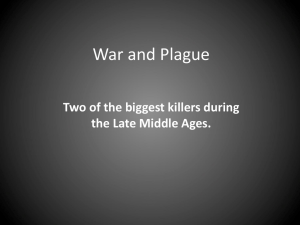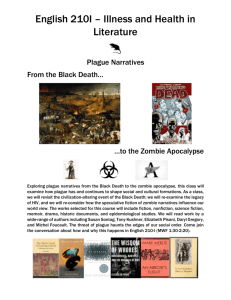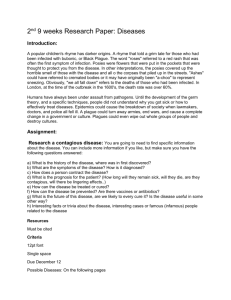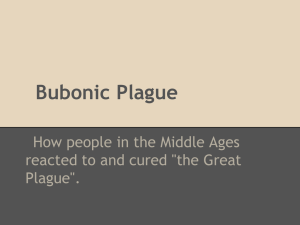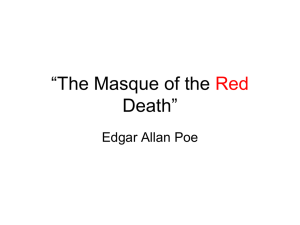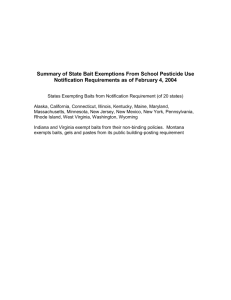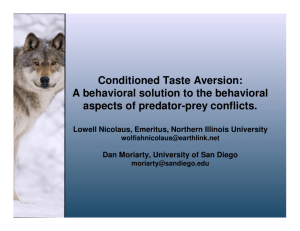File - Sheeva`s Eportfolio
advertisement
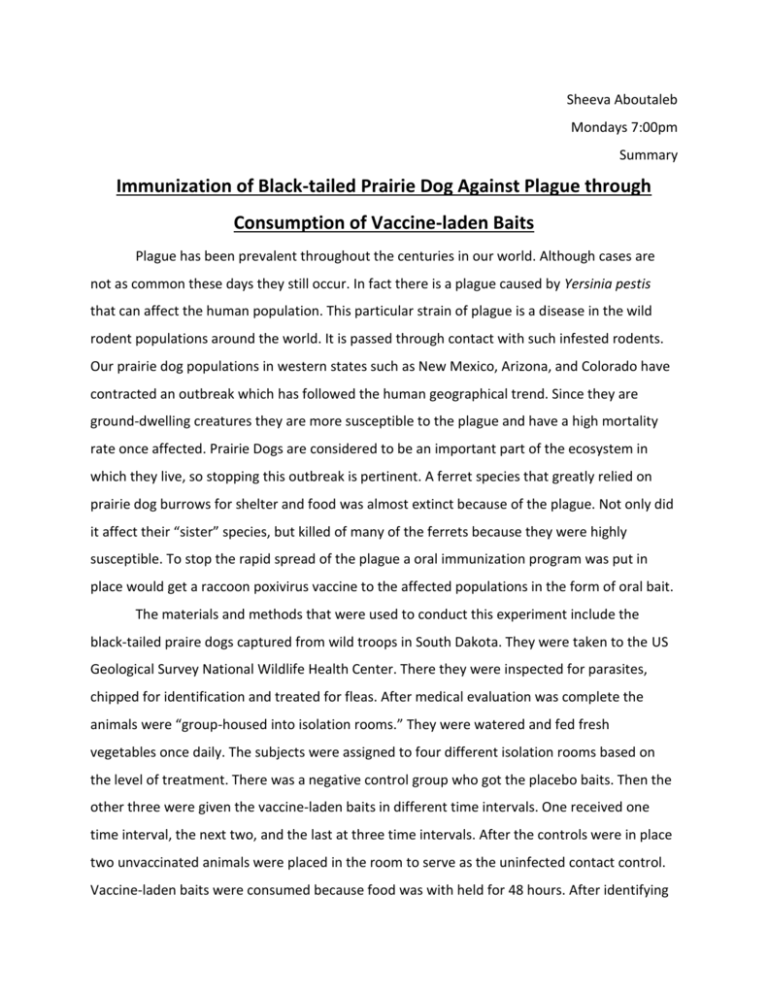
Sheeva Aboutaleb Mondays 7:00pm Summary Immunization of Black-tailed Prairie Dog Against Plague through Consumption of Vaccine-laden Baits Plague has been prevalent throughout the centuries in our world. Although cases are not as common these days they still occur. In fact there is a plague caused by Yersinia pestis that can affect the human population. This particular strain of plague is a disease in the wild rodent populations around the world. It is passed through contact with such infested rodents. Our prairie dog populations in western states such as New Mexico, Arizona, and Colorado have contracted an outbreak which has followed the human geographical trend. Since they are ground-dwelling creatures they are more susceptible to the plague and have a high mortality rate once affected. Prairie Dogs are considered to be an important part of the ecosystem in which they live, so stopping this outbreak is pertinent. A ferret species that greatly relied on prairie dog burrows for shelter and food was almost extinct because of the plague. Not only did it affect their “sister” species, but killed of many of the ferrets because they were highly susceptible. To stop the rapid spread of the plague a oral immunization program was put in place would get a raccoon poxivirus vaccine to the affected populations in the form of oral bait. The materials and methods that were used to conduct this experiment include the black-tailed praire dogs captured from wild troops in South Dakota. They were taken to the US Geological Survey National Wildlife Health Center. There they were inspected for parasites, chipped for identification and treated for fleas. After medical evaluation was complete the animals were “group-housed into isolation rooms.” They were watered and fed fresh vegetables once daily. The subjects were assigned to four different isolation rooms based on the level of treatment. There was a negative control group who got the placebo baits. Then the other three were given the vaccine-laden baits in different time intervals. One received one time interval, the next two, and the last at three time intervals. After the controls were in place two unvaccinated animals were placed in the room to serve as the uninfected contact control. Vaccine-laden baits were consumed because food was with held for 48 hours. After identifying each animal they were taken into a carrier where the bait was administered via small food dishes that had a single vaccine-laden bait or the placebo. When three weeks of vaccine administration had expired the plague was introduced to the population. Each prairie dog received a subcutaneous injection of a diluted amount of the bacteria. When signs of the disease became prevalent those infected were humanely euthanized. Then after twenty-eight days all survivors were disposed of in the same fashion. Their bodies were frozen for future evaluation. After evaluating the data it was found that all of the prairie dogs consumed at least one of the two baits that were offered in each time interval. When the plague was introduced every treatment group became sick and died. The disease was identified in a culture of the liver of all animals. In the control group that received placebo baits two animals were found to have isolated the Y. pestis from a lesion at the injection site during necropsy, but the rest of the tissues were affected. Survival turned out to be higher in groups two and three in comparison to the placebo group. It was also found that gender did not play a role in survival. Overall, those that consumed the vaccine-laden bait survived longer and had a higher antibody rate over the twenty-eight day challenge. Sheeva Aboutaleb Works Cited 1. Immunization of Black-tailed prairie Dog against Plague through Consumption of Vaccine-laden Baits, Tonie E. Rocke, Susan R. Smith, Dan T. Stinchcomb, Jorge E. Osorio E portfolio: http://sheevaseportfolio.weebly.com



